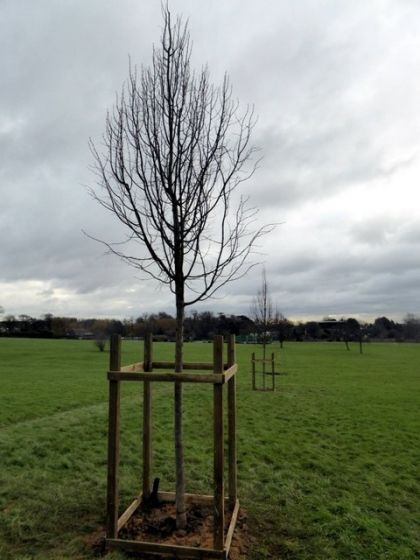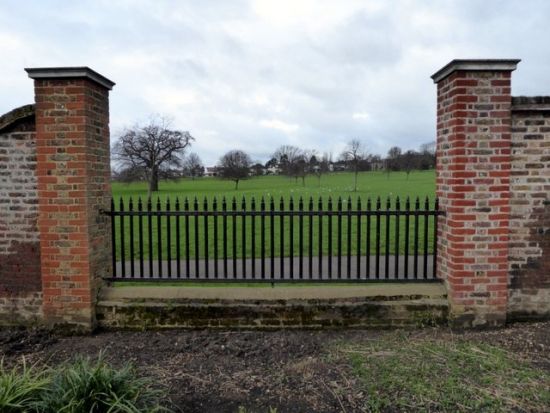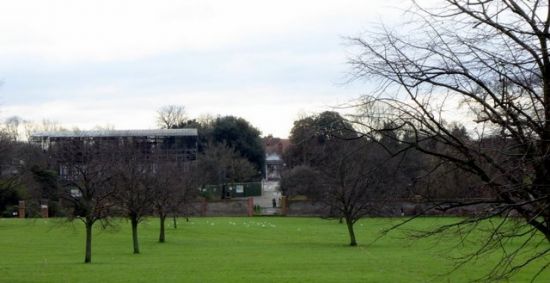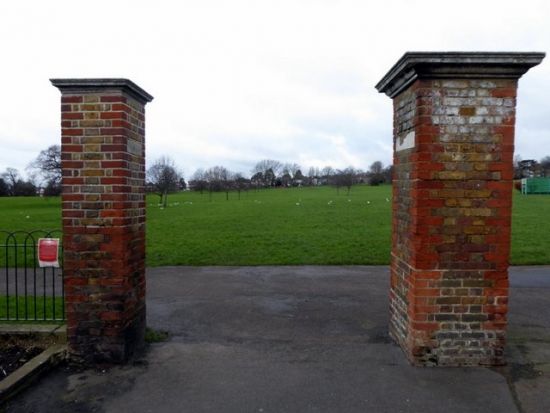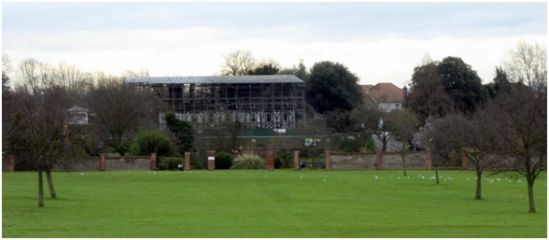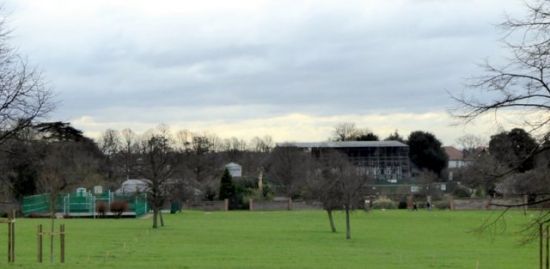Within the next few weeks Enfield Council is hoping to start work to restore the double avenue of trees in Broomfield Park which extends in a straight line across the whole of the top field from the western edge of the Park in the direction of the ornamental ponds and remains of Broomfield House. The avenues and the remains of a former "causeway" running between the tree lines are regarded as important features relating to the Park's Baroque history.
The existing avenue of lime trees was planted around 35 years ago to replace the former impressive avenue of pollarded elm trees, which was lost to Dutch Elm Disease in the late 1970s. Unfortunately, because of damage by grass cutting machinery or vandalism, the council has had to fell many of the lime trees, while others are in poor shape.
The public consultation on the future of Broomfield Park and Broomfield House finishes on Sunday 30th November

Location of the double avenue of lime trees
Only nineteen of the existing lime trees are considered suitable for retention. The stumps of eleven trees will be removed and 50 new trees planted. Like the existing limes, the new trees will be of the species Tilla Cordata ("Greenspire") (Small Lime Leaf) - a species which is native to Britain.
Why not replant elms?
The Council looked into the option of replanting the avenue with elms, but this would have involved the extra cost of felling and replacing with elms the 19 lime trees that are in good condition. Furthermore, further destruction by Dutch Elm Disease could not be ruled out, as there are no 100 per cent resistant species available. Elms would also have been vulnerable to Elm Yellows Phytoplasma (Candidatus Phytoplasma Ulmi). This is a bacterial disease which kills the vessels within the trees system that provide the uptake and transport of water and nutrients around the trees system, killing the tree. This disease has been identified in tree nurseries in Cambridgeshire.
 © Christine Matthews and licensed for reuse under this Creative Commons Licence
© Christine Matthews and licensed for reuse under this Creative Commons Licence
The former avenue of elms photographed in 1971 by Christine Matthews
To ensure that the new trees fare better than their predecessors, the Council will be surrounding each tree with a protective fence. A three-year aftercare programme, including watering using preinstalled irrigation tubes, will assist the trees' survival and growth into mature trees. The Council has said that if necessary, it will use its own in-house team to continue watering the trees after the completion of the aftercare programme.


